Dishwasher rinse aid - store-bought and homemade
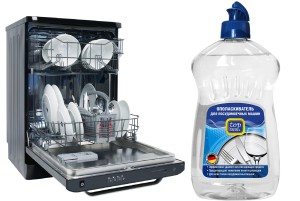 Many people have long been accustomed to using various rinse aids for washing machines, because with them the laundry becomes much fresher and softer. But not everyone knows that a rinse aid was also invented for the dishwasher, so that when your plates and pots leave the washing tank they do not smell of chlorine and other disgusting chemicals, but shine and shimmer. In this article we will talk about how to use dishwasher rinse aid, why it is needed at all, and how it can be replaced so that the freshness effect is preserved.
Many people have long been accustomed to using various rinse aids for washing machines, because with them the laundry becomes much fresher and softer. But not everyone knows that a rinse aid was also invented for the dishwasher, so that when your plates and pots leave the washing tank they do not smell of chlorine and other disgusting chemicals, but shine and shimmer. In this article we will talk about how to use dishwasher rinse aid, why it is needed at all, and how it can be replaced so that the freshness effect is preserved.
How to use rinse aid in the dishwasher?
When repairing washing machines and dishwashers, it is very interesting to watch how people make banal, but nevertheless very common mistakes. Yes, they use rinse aid for the dishwasher, but when you ask the question: where do you pour the rinse aid, the answer you hear is more than original - in the same place as the powder. That is a person spends years wasting expensive rinse aid, mixing it with powder and sincerely thinking that after this his dishes will be much fresher.
Firstly, I would like to tell such people - first of all, read the instructions for the dishwasher and preferably do it very carefully. Secondly, for each product there is a separate compartment in the dishwasher cuvette.
The machine takes the rinse aid last at the very end of the washing program. If the rinse aid gets into the water tank too early, it will be equivalent to the fact that it is not there at all. And in general, it is not clear why it is needed in a portion of water, which will still go into the sewer. Rinse aid in a dishwasher plays the role of not only a freshener, its tasks are:
- remove droplets and stains from the surface of the dishes;
- neutralize acids and alkalis that are present in detergents and inevitably damage the dishwasher; the rinse aid reduces the contact of machine parts with aggressive chemicals to a minimum;
- give the dishes a dazzling and magnificent shine.
For your information! A good rinse aid will not only do all of the above, it will even remove undissolved residues of aggressive detergents from the surface of the dishes, usually these are stuck grains of powder.
We have justified in general terms the need to use rinse aid for a dishwasher; it is clear why it is needed, now let’s talk about where it should be poured. In general, the compartment for detergent and rinse aid is located in the dishwasher door, everyone knows this. But then there are the nuances. Which compartment of the cuvette you pour the rinse aid into will depend on the dishwasher model, but usually it is a tightly closed central compartment.
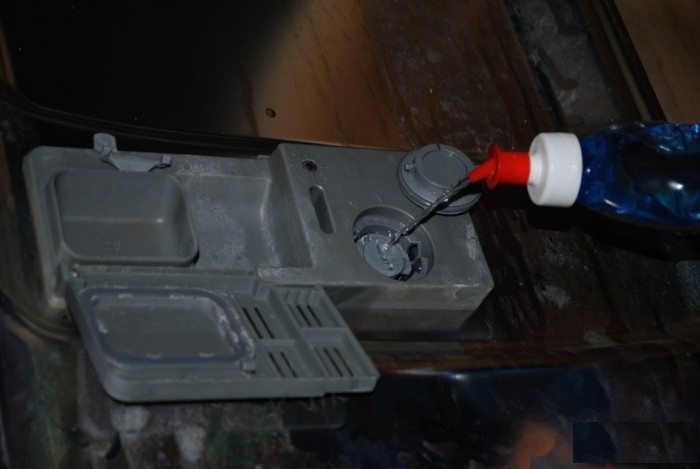
Rinse aid should be poured into this central compartment before starting the washing program; we put powder in the adjacent compartment. As in the case of powder, we determine the amount of rinse aid individually by reading the instructions that the manufacturer prints on the packaging with the product. But in this case, you need to take into account the fact that manufacturers deliberately overestimate the doses of rinse aid that need to be used during one dishwashing cycle. This is beneficial for them, because you will come to the store again for a new bottle.
Experts advise determining the required amount of powder and rinse aid through repeated samples and comparing the results. In some cases The recommended dose of rinse aid can actually be reduced by almost half without consequences, and this is a very real saving.
Factory rinse aid components
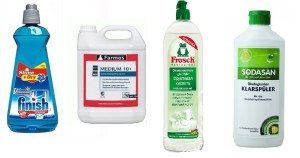 By calculating the dose of rinse aid, you can save a lot of money, but if you prepare it yourself, the savings will be even more significant. To make a homemade mouthwash with your own hands, you need to know the composition of the factory product, how much and what components are present in it. Different manufacturers of rinse aids do not differ much in the composition of their products. So, at the base of all rinses there is:
By calculating the dose of rinse aid, you can save a lot of money, but if you prepare it yourself, the savings will be even more significant. To make a homemade mouthwash with your own hands, you need to know the composition of the factory product, how much and what components are present in it. Different manufacturers of rinse aids do not differ much in the composition of their products. So, at the base of all rinses there is:
- non-ionic surfactants;
- anionic carboxyl polymers – polycarboxylates;
- citric acid (or something like that);
- ethanol and tensides.
Note! Cheap rinses may not contain tensides and natural acids, but this does not make them worse, because the composition does not change much.
It turns out that there is nothing overly complex in the composition of the rinse aid, and if so, then you can try to repeat it at home, if not exactly the same, then close. The ideal goal is to get a cheap homemade rinse aid that will do its job well and will not harm the dishwasher. By the way, if you want to prepare not only the rinse aid yourself, but also dishwasher powder, read the article of the same name on our website, there you will find the composition of the homemade powder and much more. Let's start looking for recipes.
Is it possible to make your own mouthwash?
The composition of dishwasher rinse aid is more or less clear to us; it is not clear where to get these non-ionic surfactants and anionic carboxyl polymers, not to mention what it is and how much to add. We think that it is not worth delving into such things at the everyday level without being a chemist. It is enough to know the recipe for a good homemade mouthwash and where to get the ingredients to implement this recipe. Let's figure it out.
The first recipe for dishwasher rinse aid is one of the simplest and most effective. There is only one component and you can buy it at any nearby grocery store. This component is 9% apple cider vinegar. Use it like this:
- we find the compartment for the rinse aid;
- uncork a bottle of 9% apple cider vinegar;
- pour it into the rinse aid compartment at the rate of 1 tablespoon per 6 sets of dishes;
- pour the powder into the adjacent compartment, close the door and start the washing program.
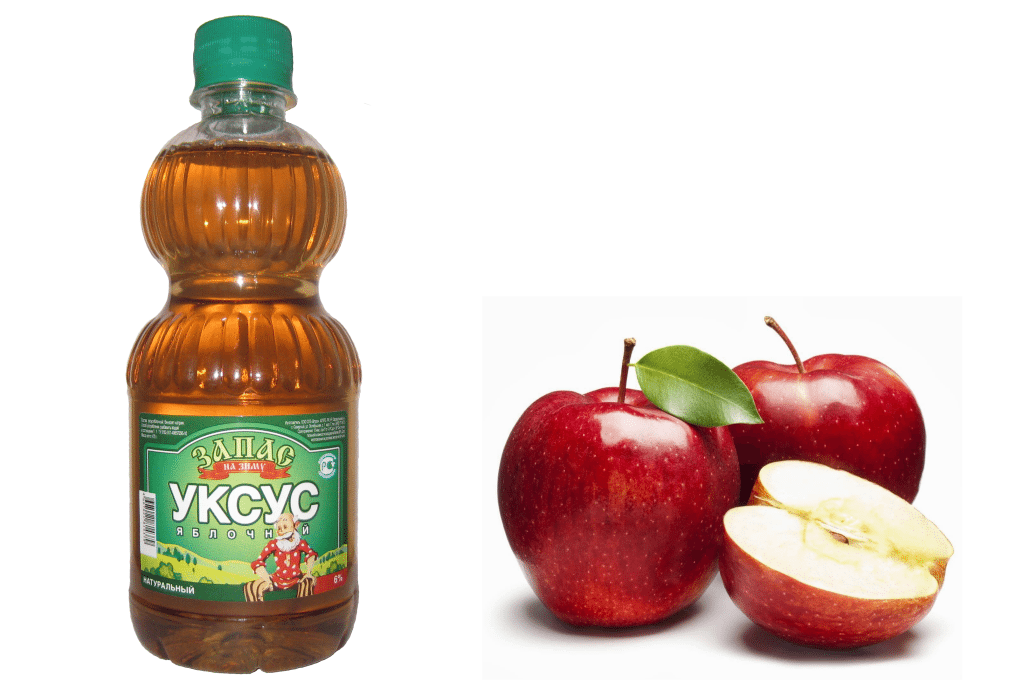
Important! If you take vinegar essence, then you will have to calculate how many drops you need to add to a tablespoon of water to get the correct concentration.
The second recipe involves using essential oil, lemon juice or citric acid and glass cleaner. How much and what should I take? The ratio of components is as follows: 5 parts lemon juice or acid, 2 parts essential oil (preferably eucalyptus) and one part glass cleaner. Pour the product into the rinse aid compartment, calculating as follows: 1 tablespoon for 8 sets of dishes. Needless to say, all of the above components can be purchased completely freely - glass cleaner in a household chemical store, essential oil in a pharmacy, and lemon juice or citric acid in a grocery supermarket.
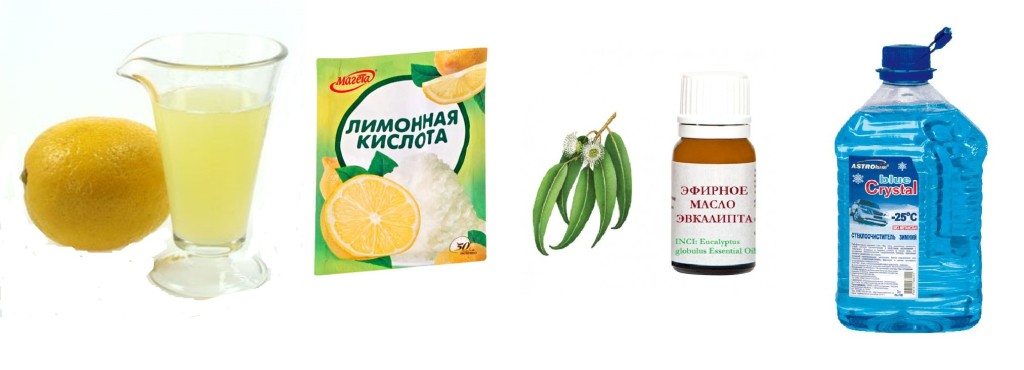
The third recipe involves the use of soda ash and borax. How many components should you take to make a good product?
Important! This composition can be used not only as a rinse aid, it can help wash away any remaining dirt from dishes.
So, take 1 part borax and 1 part soda, pour it into the rinse aid compartment and add a little water there to make a semi-liquid slurry. A tablespoon of this paste is enough for about 6 sets of dishes.
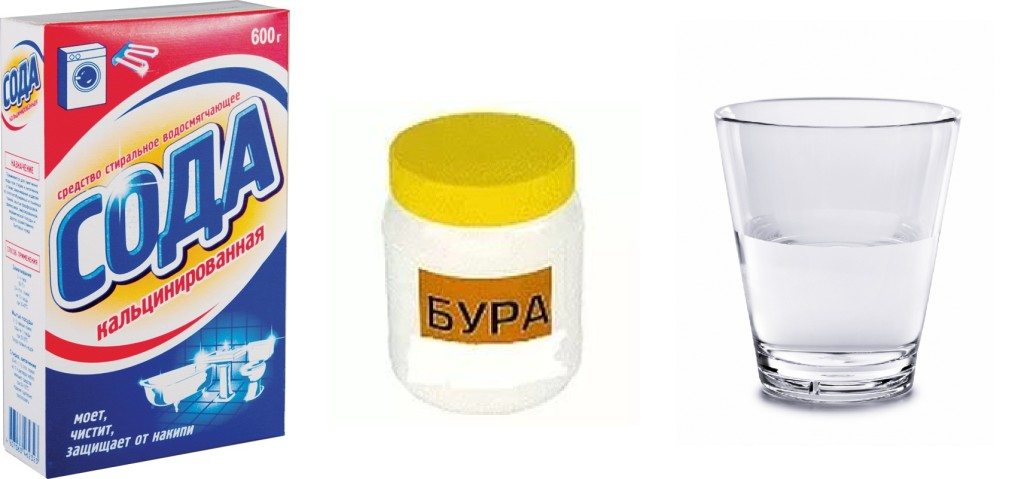
In conclusion, we note that it is very important to use rinse aid when washing dishes in the dishwasher, because it refreshes the dishes, removes stains from their surface, which powder cannot do, and also gives the dishes shine. Factory-made rinse aid can be replaced with homemade one, which you can prepare with your own hands, the main thing is to know the exact recipe, how much and what to put in, because it is the composition that will ultimately affect the quality of your homemade rinse aid. Good luck!
Interesting:
1 reader comment


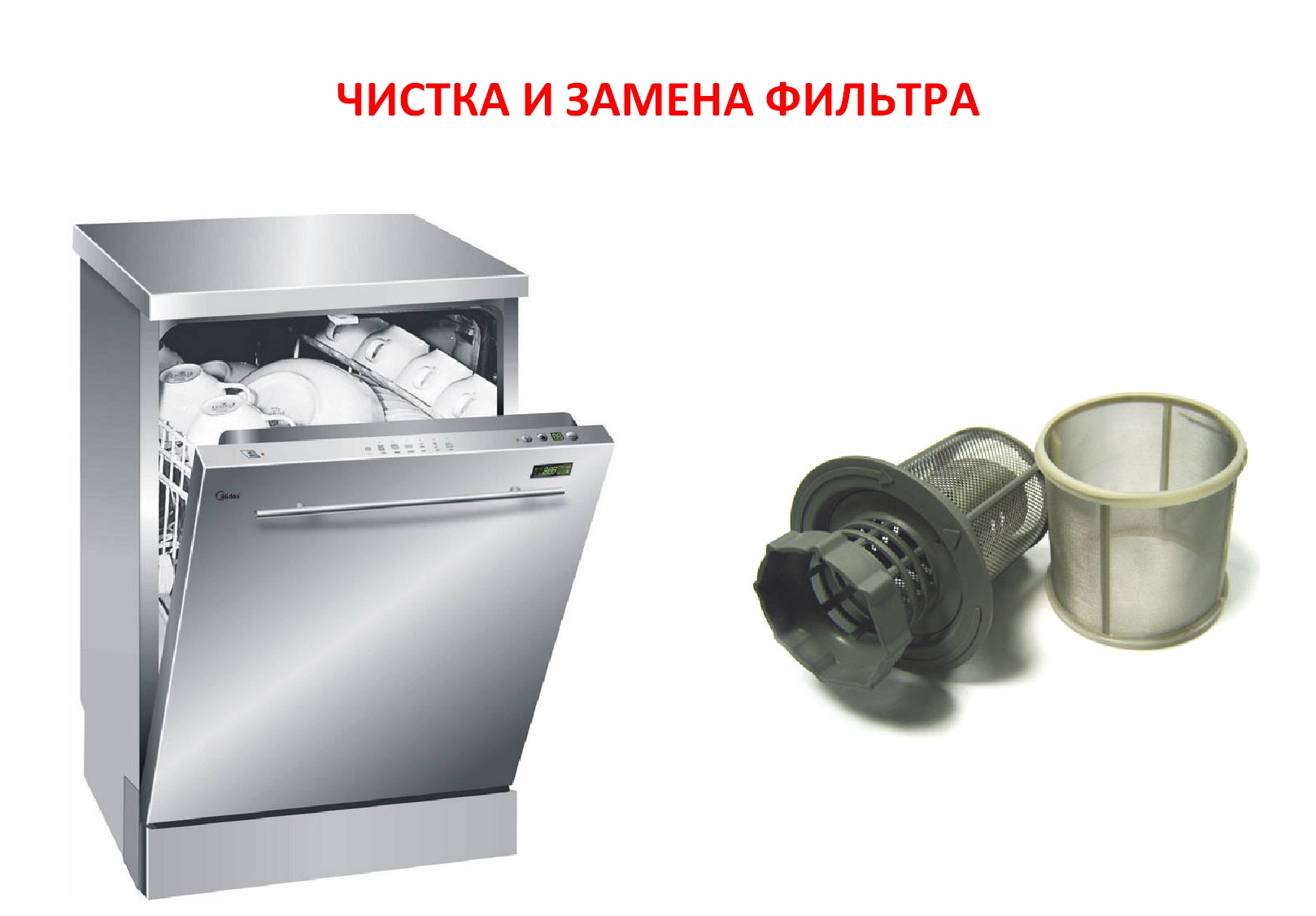

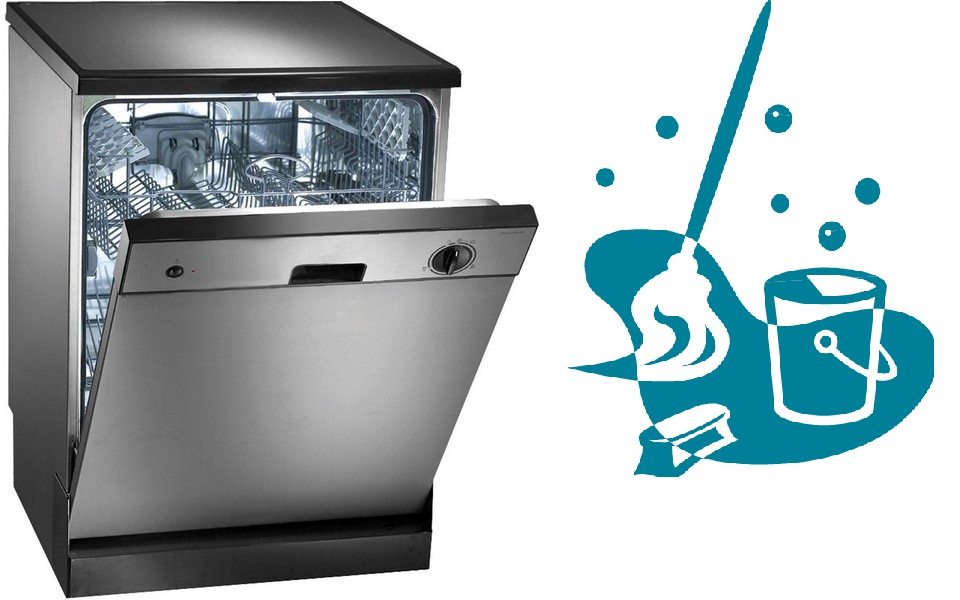
















How much does such beauty cost?!